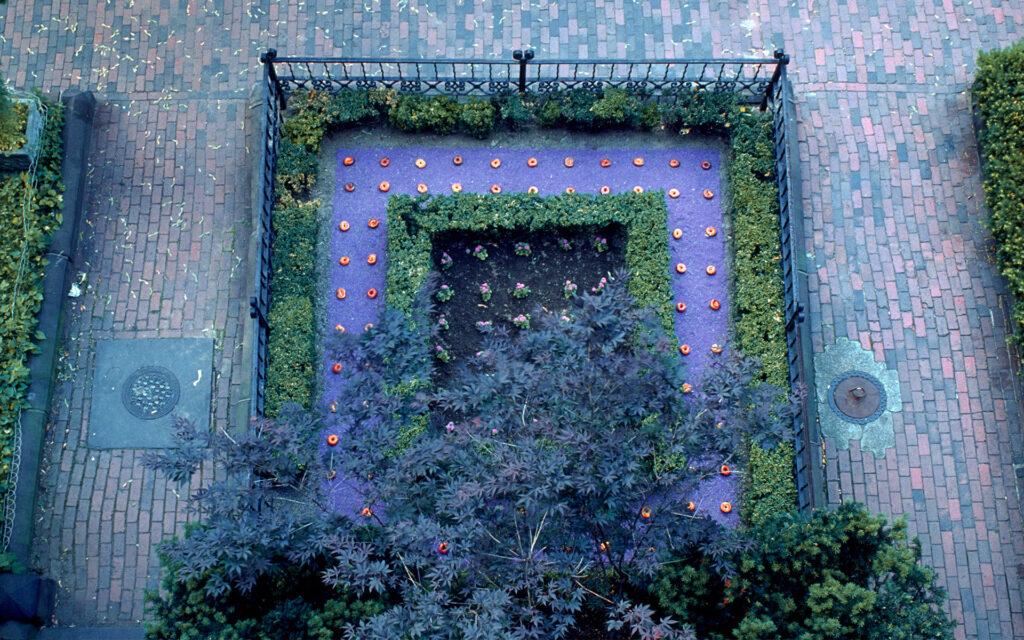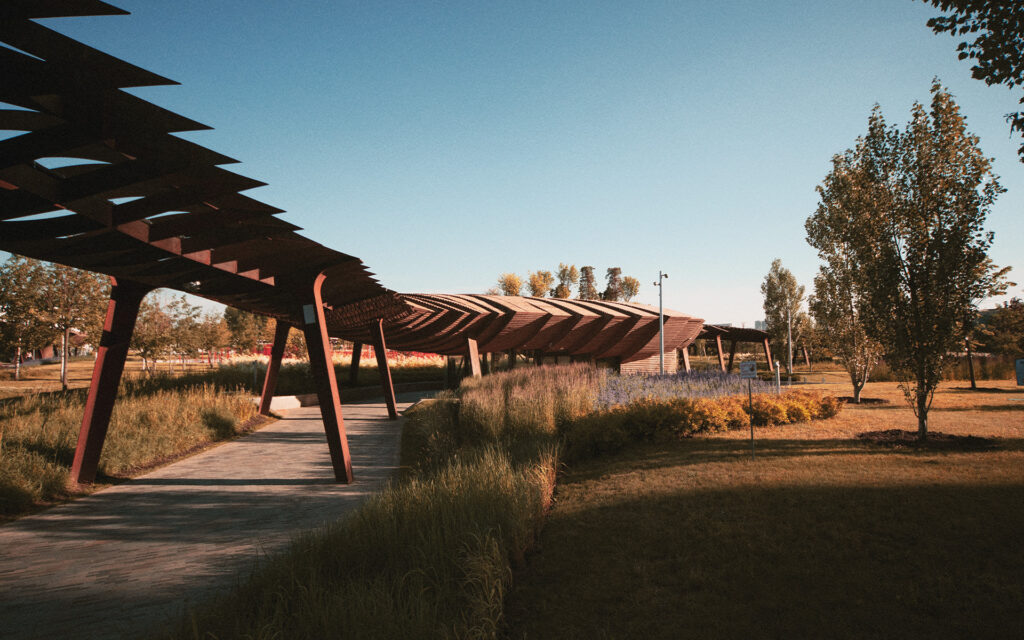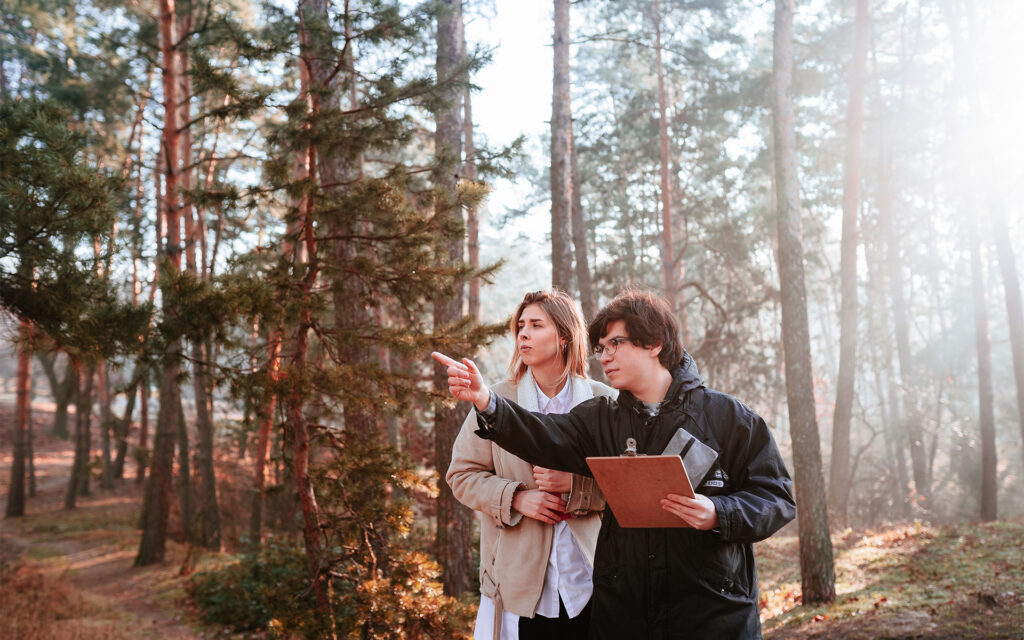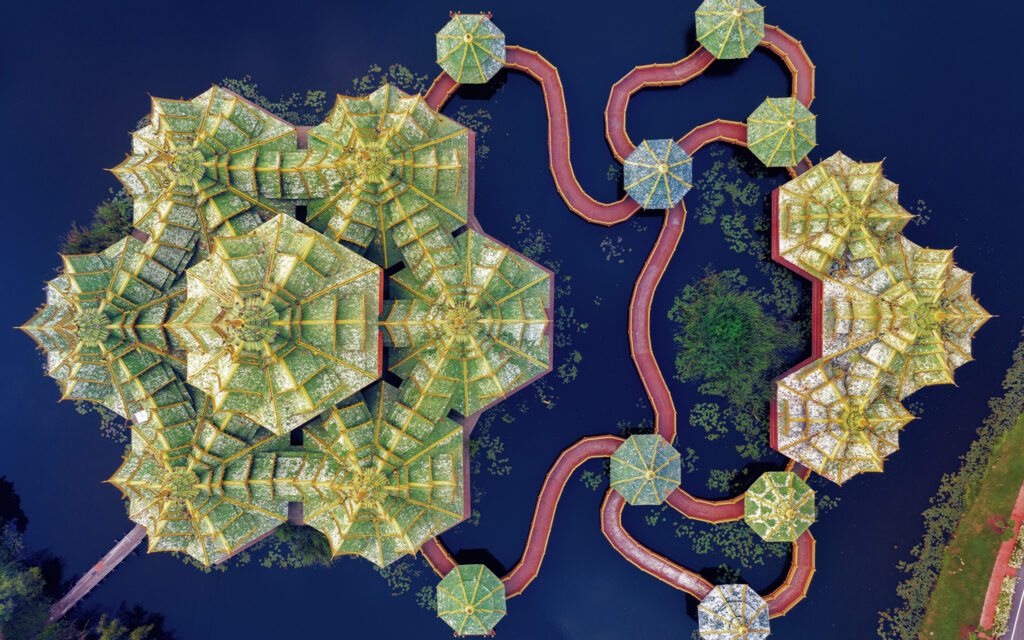Climate change is becoming increasingly alarming with rising sea levels, droughts, and extreme weather events. How will society adapt to the enormous changes that are being predicted? We do not know, but it seems that landscape architecture has some ideas and proposals about what can be done.
A bagel garden
One of the most curious and surprising things is what happened in the late 1970s. A young exponent of landscape architecture (soon to become a star: Martha Schwartz) strategically placed about thirty bagels in the small garden of her house. The artist was eager for a quick and inexpensive installation to make with her own hands. It was a small garden, only 22 square meters, in her house in Back Bay. Incorporating two concentric square hedges from an existing formal garden, Schwartz based her design on French Renaissance gardens, designed as stages for dance parties and celebrations.
But so, the garden has also become an ode to the landscaper’s favorite food: “Bagels are humble, homey and ethnic. Besides, I could get a lot of them cheaply.” Between the outer and inner squares of the boxwood hedges, 16 inches high, Schwartz laid out a 30-inch-wide strip of purple aquarium gravel laying over a grid of eight dozen bagels. Each bagel was treated to withstand atmospheric changes. Within the inner square of the hedge, she planted 30 purple Ageratum to match the gravel. “Despite the many garden party guests who helped us celebrate the installation and my husband’s return,” Schwartz recalls, “he wasn’t particularly enthusiastic.”

Adapting to changes
However, this act was a sensation in the field of landscape design, as it challenged everyone to think of landscape architecture as art, not just urban planning, which builds city parks as “green zones,” but as a narrative. And it was what the surrounding universe needed to capture the public’s imagination to focus on the challenges that await us to adapt to changes, including climate change.

The question was: what does climate change have in common with Martha Schwartz’s bagel garden? The first thing to say is that landscape architecture is doing a precise and innovative adaptation, especially if we think about planning in the face of rising sea levels. After an extreme storm event and reconstruction funds become available, landscape architects help communities integrate climate change into their long-term planning. It happens just like in the bagel garden, which was an iconic project.
What sustainability truly is
To learn and understand what we consider truly sustainable and to define new tools for landscape architecture, it remains to be seen whether these tools will be useful, as adaptation is a new and emerging field. The main point is that landscape architecture can convince people to collaborate by involving urban planners, civil and environmental engineers, administrations, and ordinary citizens working for a sustainable landscape. Landscape architects are at the heart of these efforts. They are in a unique position to take on the role of leaders in adaptation planning in the coming years. They are the ideal subjects to conduct this challenge deeply committed to sustainability and the protection of the planet.

We are aware that climate change is one of the problems facing humanity today. In their work, designers prioritize green infrastructure and conservation techniques. They help preserve natural ecosystems and reduce carbon emissions. They strive to incorporate renewable energy sources and energy-efficient technologies and they do it whenever it is possible. As Schwartz herself states: “We are aware that the built environment has a significant impact on the health of our planet, and it is our responsibility to design spaces that are not only beautiful but also environmentally responsible. We are committed to being leaders in the fight against climate change and believe that every small action can make a big difference.”
We are aware that the built environment has a significant impact on the health of our planet, and it is our responsibility to design spaces that are not only beautiful, but also environmentally responsible. We are committed to being leaders in the fight against climate change and believe that every small action can make a big difference.
Landscape architecture
Involving different urban actors, interacting to design a city’s landscape requires a collaborative spirit and the ability to foster dialogue between different points of view. The aim should be to make clear the various needs that must be mediated through landscape architecture.

This collaborative process, with its characteristic innovative and “out-of-the-box” thinking, also depends on a challenge to conventions from viewpoints that shape how we imagine the way people can live in the environment. Instead of designing for the lowest common denominator, as often happens when there are many vested interests, we need to raise the bar. It is necessary to find a path to a fresh and expressive landscape that gratifies stakeholders by returning a result that is often as surprising as Martha Schwartz’s bagels.
For further study: Martha Schwartz‘s website
You might be interested in: Sustainable Lifestyle: How to Make it a Reality?





